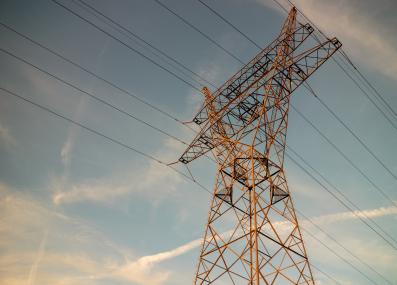Have a question?
Does net metering for home solar create winners and losers?
It’s complicated, but in parts of the country where home solar is most common, houses without solar do tend to pick up a bigger bill for maintaining the electric grid. But solar has unpriced benefits for everyone, as well.
June 20, 2024
Homeowners with solar panels on their roofs may pay little or nothing on their electric bills. But that doesn’t mean they’re free of the grid and produce their own power around the clock. Instead, these homes supply electricity to the wider electric grid when the sun is shining, and buy electricity from the grid when it’s not.
To account for that, many states use a billing policy called “net metering.” Put simply, net metering is a math problem: each month, the utility calculates how much utility-generated electricity a customer used, then subtracts the solar electricity they supplied to the grid before calculating their bill. In effect, this means households with solar are paid the full retail rate for electricity, which is usually more than the utility would pay to a power plant. If a solar system produces a lot during the month, a customer’s electricity bill may be very small, even zero.
The challenge is that most people’s utility bills are designed to cover more than just the electricity itself. Utilities also have to build and maintain power lines, transformers, and the rest of the complex infrastructure that keeps our lights on. To cover these costs, most utilities charge each customer for a portion of grid maintenance based on their energy use. The costs of paying for the grid, plus a customer’s energy usage costs, together make up the “volumetric rate” most people pay on their energy bills.
Combine “net metering” with the “volumetric rate,” and homeowners with solar may pay very little to help maintain the grid, even though they are still using it. “That has all sorts of equity and economic implications,” says Christopher Knittel, MIT professor of energy economics and director of the Center for Energy and Environmental Policy Research.
In the past, it made sense to tie grid maintenance to overall energy use. Wealthier people with big homes use more energy, so they pay more to make sure the grid is in good condition. Net metering for home solar installations changes that equation. “The first winner of net metering is the household that installed the solar, the first loser is all the households that didn't,” says Knittel. This is particularly unfair, he says, because wealthier households and communities are more likely to get solar panels, leaving the utility’s lower-income customers with higher costs.
Some states, including California, have moved to pay homeowners less for their spare solar electricity or are considering doing so. In Indiana, net metering was recently replaced with an “excess distributed generation tariff.” Instead of a net metering rate, households with solar get paid a price for their extra solar electricity that doesn’t include any grid costs, effectively setting a higher rate for energy they buy than energy they sell.
But even if your state uses net metering, that doesn’t necessarily mean that non-solar households are are overpaying for grid maintenance in your community, compared to a system like Indiana’s. The imbalance for non-solar households kicks in only once about 20 percent of people in an area install solar on their rooftops, says Knittel, who co-authored a recent study of this problem.1 In most places, that means those challenges lie in the future. But in places where solar is very popular, like Hawaii and California, it could impact electric bills.2
But Knittel says that, while the benefits of home solar don’t fully justify the deals owners get on their electric bills today, some subsidy for home solar does make sense. Solar is a clean energy source that reduces the need for climate-warming fossil fuels, which helps everyone by helping to slow climate change. And solar installations bring other benefits—like better air quality—that aren’t always accounted for in the price of electricity. Some solar advocates and environmental groups argue these benefits are so great that the current rates for net metering are worth paying.
Wherever you fall on that question, Knittel says, the trouble isn’t net metering alone. The whole system of electricity rate design may need a closer look as we try to quickly transition our whole economy to clean energy. Including the costs of maintaining the grid in overall electricity prices doesn’t just give an advantage to home solar, but also makes electricity costs artificially high. That means electric appliances, like heat pumps, may appear less economically attractive than climate-warming gas heat. Given the high costs to us all of continuing to warm the planet, Knittel says it’s time to think about new ways to pay for our shared grid. “If we want to electrify transportation and heating and cooking, we just can't price electricity so inefficiently.”
Submit your own question to Ask MIT Climate
Get the latest from Ask MIT Climate monthly in your inbox
1 Inzunza, Andrés, and Christopher Knittel, "Distributional Effects of Net Metering Policies and Residential Solar Plus Behind-the-meter Storage Adoption." MIT Center for Energy and Environmental Policy Research, Working Paper Series, October 2020.
2 Largely for this reason, both Hawaii and California have recently moved away from standard net metering.









